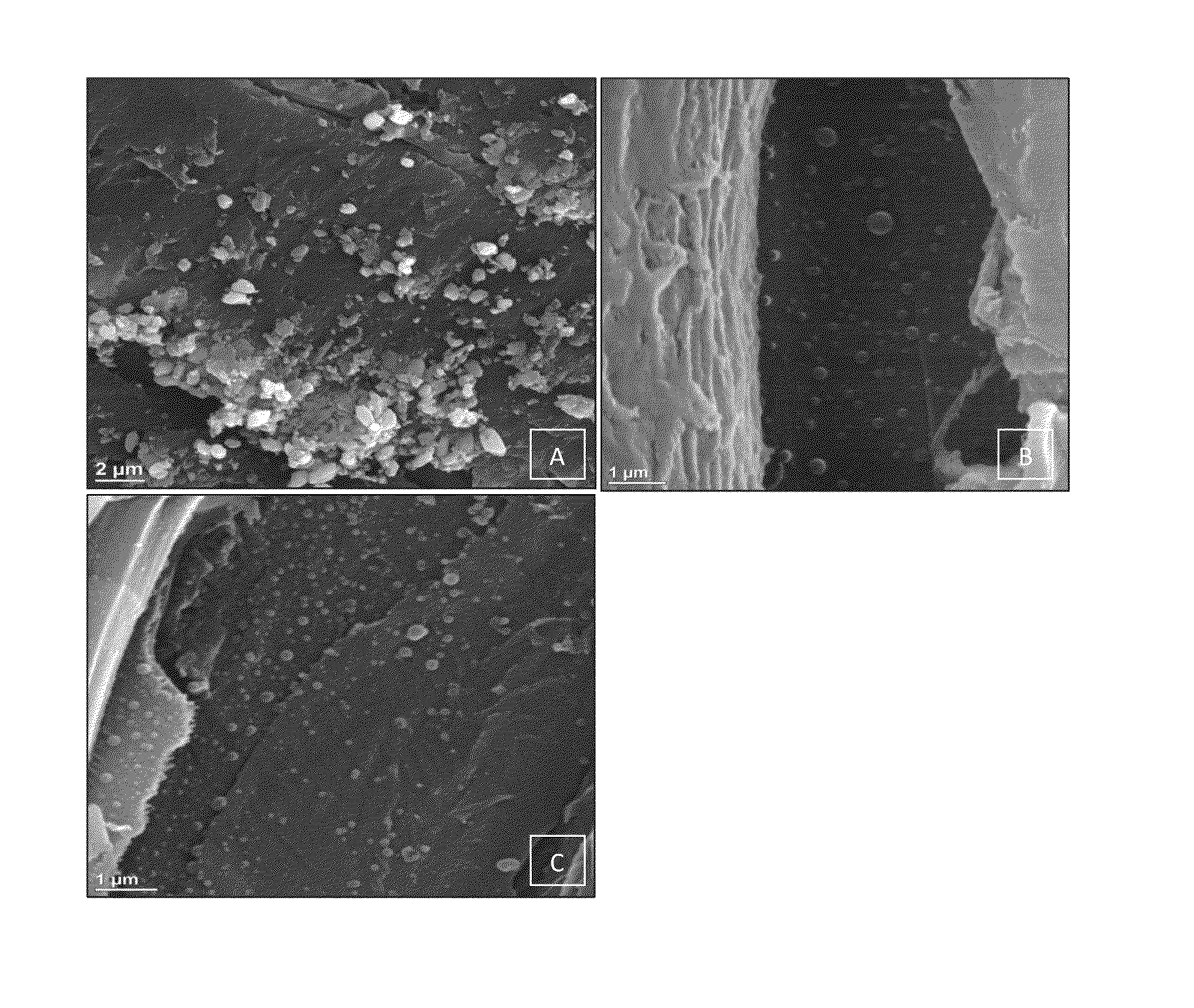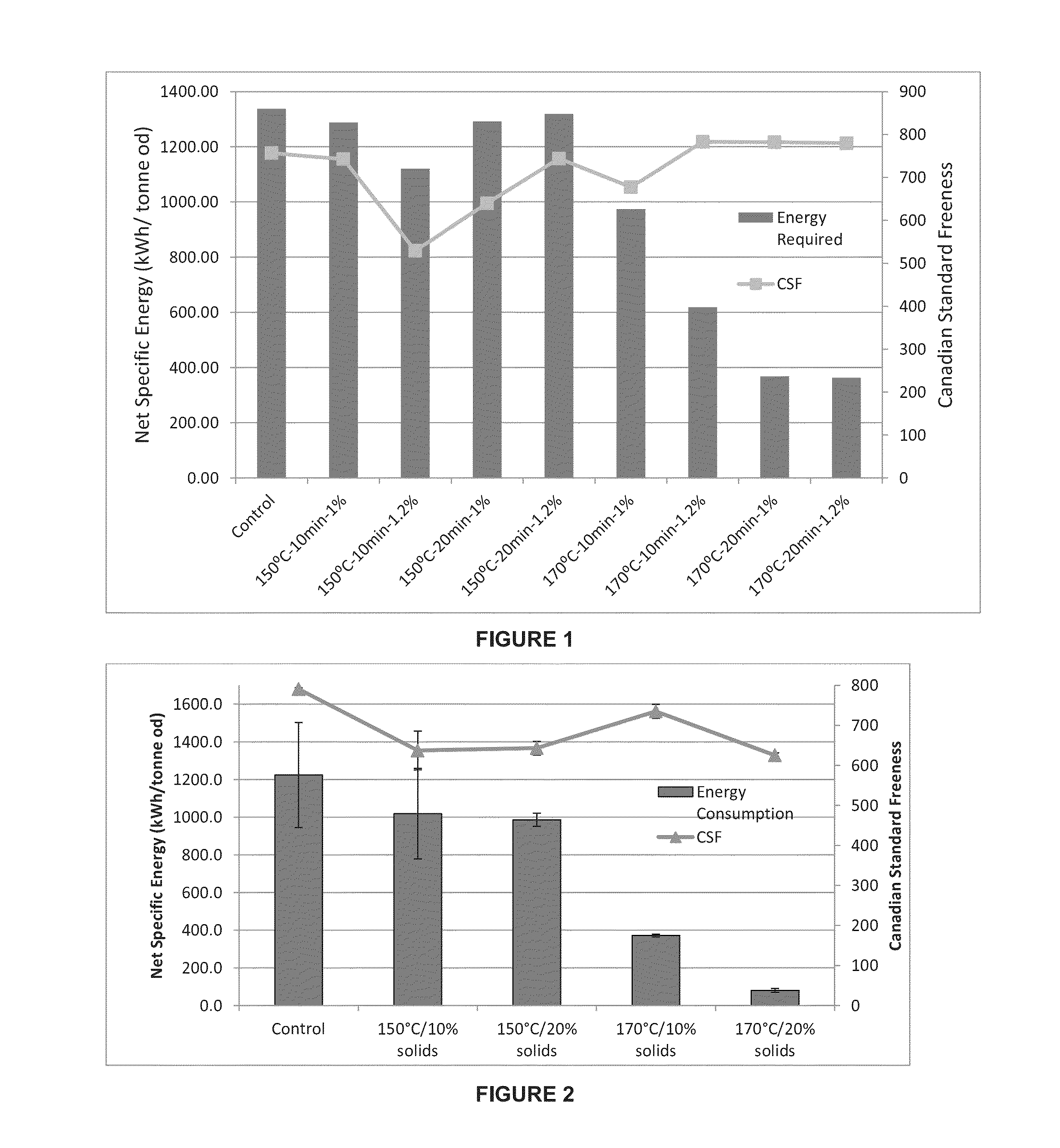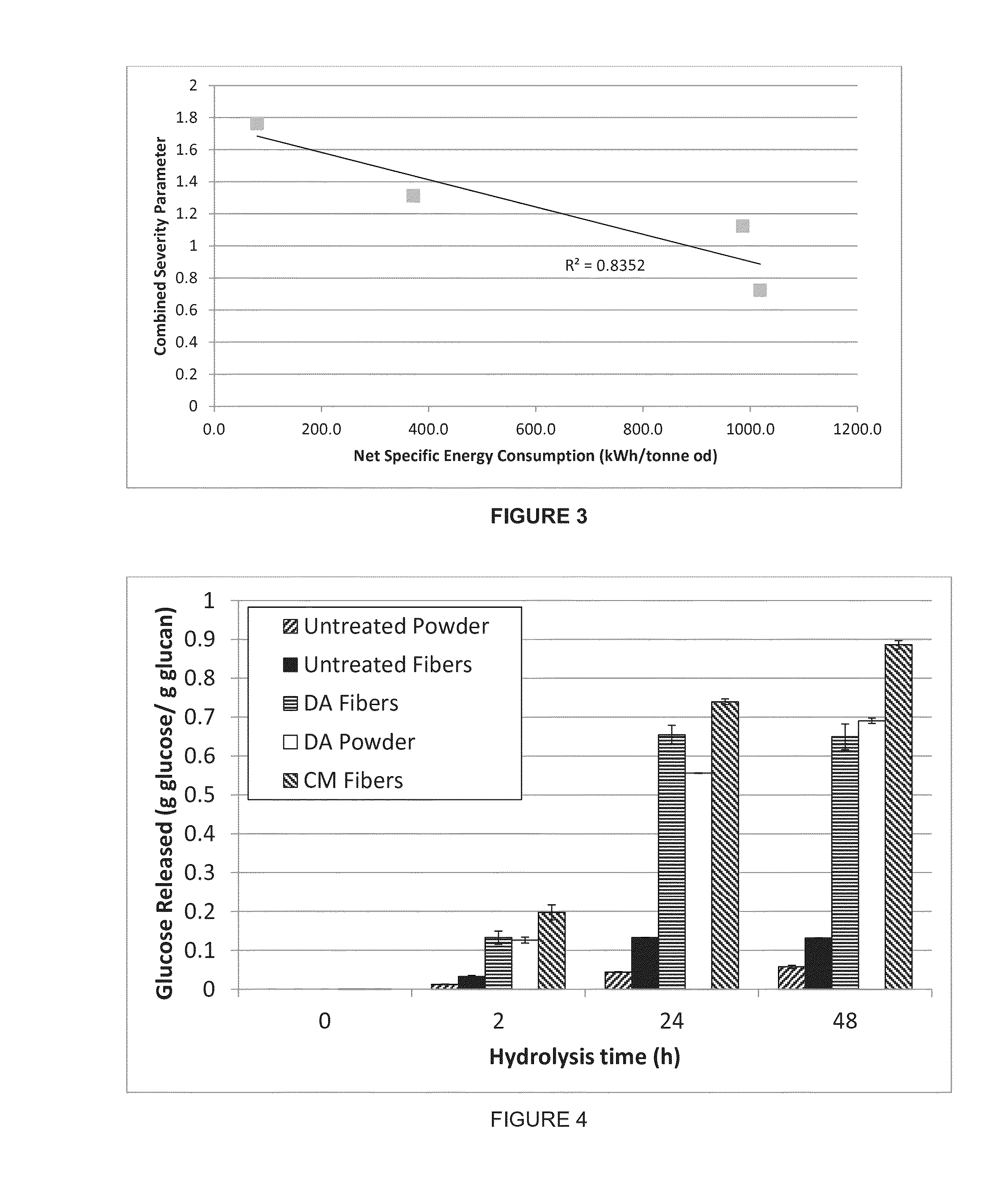Two-stage chemi-mechanical pretreatment for lignocellulosic biomass
a lignocellulosic biomass and pretreatment technology, applied in the field of pretreatment of biomass, can solve the problems of high cost of downsizing wood chips to fibers or powders, loss of enzyme activity through non-productive binding with hemicellulose and lignin, and restricted access to cellulose surface area. , to achieve the effect of reducing net specific energy consumed
- Summary
- Abstract
- Description
- Claims
- Application Information
AI Technical Summary
Benefits of technology
Problems solved by technology
Method used
Image
Examples
example 1
Effect of Low-Consistency Acid Treatment on NSE Consumption During Disc-Refining of Aspen Wood Chips
[0110]The NSE consumed to downsize a set of acid-treated wood chips to a specified CSF is outlined in FIG. 1. In certain aspects of the invention, hardwood chips undergo a single- or two-stage acid treatment prior to mechanical downsizing using a disc-refiner. As can be seen in FIG. 1, low-consistency acid-treatment of wood chips markedly reduces the NSE consumed during disc-refining. The decrease in NSE consumption is affected by acid-treatment conditions, wherein more severe conditions result in greater decreases in NSE. The decrease does not seem to be affected by degree of refining, as CSF is relatively stable for all samples, i.e. 600-800.
[0111]Initial work on aqueous dilute acid commonly used low-consistency acid treatments (<15% con). These chemical treatments were done at low-consistency due to limitations in mixing equipment, which could not handle high-consistency wood parti...
example 2
Effect of Acid Treatment Consistency and Temperature on NSE Consumption During Disc-Refining of Acid-Treated Aspen Wood Chips
[0112]The NSE consumed downsize a set of acid-treated Aspen wood chips to a specific CSF is shown in FIG. 2. FIG. 2 directly compares the effects of high- and low-consistency acid treatment. The acid charge and treatment time of the acid treatments were constant at 1.2% and 20 minutes, respectively. Treatment temperature was set at either 150° C. or 170° C., and consistency was set at 10% or 20%. The effect of high-consistency acid treatment on NSE consumption during disc-refining of Aspen chips was shown to have a greater effect than low-consistency acid treatment. At the most severe conditions examined, i.e. 170° C. and 20% con, the NSE consumption was reduced to less than 100 kWh / tonne od. This corresponded to a 95% decrease in NSE consumption and a 57% decrease in gross specific energy (GSE) consumption due to acid treatment of Aspen chips. Further reducti...
example 3
Cellulose Conversion for Aspen Having Undergone Single-Stage Chemimechanical Pretreatment and Single-Stage Aqueous Dilute Acid Pretreatment
[0115]The cellulose conversion following enzyme hydrolysis of Aspen samples pretreated by a single-stage chemimechanical pretreatment and a single-stage aqueous dilute acid pretreatment is shown in FIG. 4. In certain aspects of the invention, hardwood chips undergo a single-stage acid treatment, followed by mechanical downsizing using a disc-refiner, and then undergo a second acid-treatment. In the following example a single-stage chemimechanical pretreatment is investigated, where the second acid-treatment following disc-refining is omitted. In FIG. 4, this substrate is referred to as CM Fibers. This is compared to two single-stage aqueous dilute acid pretreated substrates, wherein aspen wood chips are mechanically downsized using a knife-mill or disc-refiner, and the resulting particles treated in a dilute sulfuric acid liquor. The substrate pr...
PUM
| Property | Measurement | Unit |
|---|---|---|
| Temperature | aaaaa | aaaaa |
| Temperature | aaaaa | aaaaa |
| Temperature | aaaaa | aaaaa |
Abstract
Description
Claims
Application Information
 Login to View More
Login to View More - R&D
- Intellectual Property
- Life Sciences
- Materials
- Tech Scout
- Unparalleled Data Quality
- Higher Quality Content
- 60% Fewer Hallucinations
Browse by: Latest US Patents, China's latest patents, Technical Efficacy Thesaurus, Application Domain, Technology Topic, Popular Technical Reports.
© 2025 PatSnap. All rights reserved.Legal|Privacy policy|Modern Slavery Act Transparency Statement|Sitemap|About US| Contact US: help@patsnap.com



